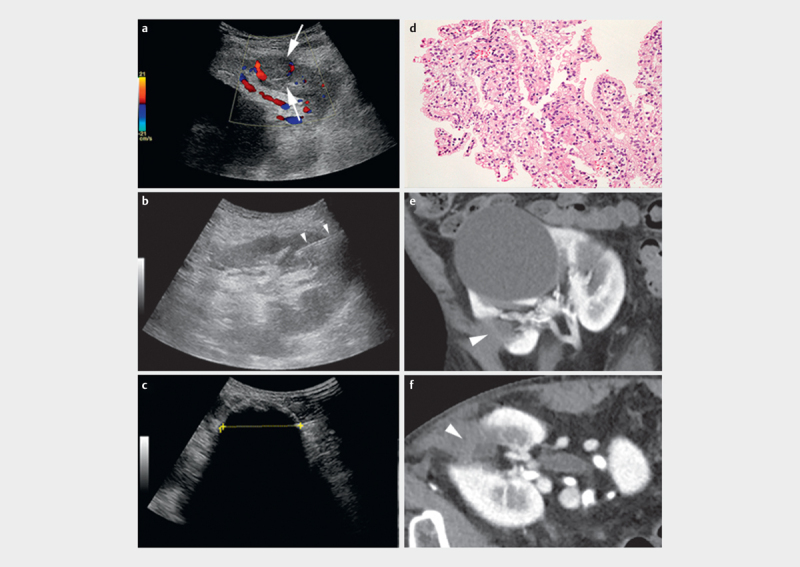Ultrasound-Guided Cryoablation of Renal Grafts Tumors.
IF 1.6
Q3 RADIOLOGY, NUCLEAR MEDICINE & MEDICAL IMAGING
引用次数: 0
Abstract
Tumors in renal grafts are rare with an estimated prevalence of 0.18 % (X. Tillou et al. Transplant Rev. 2015 and FM Drudi et al. J Ultrasound. 2019 [1, 2]). An increased incidence of graft tumors may be observed in the future due to increased donor age and prolonged graft survival. Furthermore, the immunosuppressant state of graft recipients may cause the tumor to behave more aggressively (G. Ploussard et al. BJU Int. 2012: 109: 195–9 [3]). In these complex cases, there is a need for a minimally invasive nephron-sparing treatment option that can keep patients free of dialysis. Here we present two cases of T1a renal cell carcinoma (RCC) in renal grafts that were successfully treated using ultrasound-guided percutaneous cryoablation: a minimally invasive technique where only the tumor is destroyed, and the graft’s function is preserved. Furthermore, when comparing percutaneous cryoablation to laparoscopic cryoablation and partial nephrectomy, the risk of treatment-related complications is decreased (T. Klatte et al. J Urology. 2014: 191: 1209–17 [4]).


超声引导下肾移植肿瘤的冷冻消融。
本文章由计算机程序翻译,如有差异,请以英文原文为准。
求助全文
约1分钟内获得全文
求助全文
来源期刊

Ultrasound International Open
RADIOLOGY, NUCLEAR MEDICINE & MEDICAL IMAGING-
CiteScore
3.00
自引率
0.00%
发文量
7
审稿时长
12 weeks
 求助内容:
求助内容: 应助结果提醒方式:
应助结果提醒方式:


